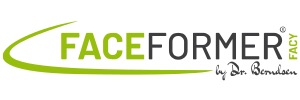Weaning off dummies
Preventing permanent damage to health
Preventing permanent damage to health
It would be best if children were never introduced to a dummy.
If at all, the soother should only be enjoyed for short minute intervals. Continuous sucking on the dummy is dangerous! Always remember this when you give your child the dummy! But why is that?

Doing something good for the baby and toddler is the intention of many parents when they provide their child with a dummy. They usually know the “pleasure” from their own childhood, because already the parents of the parents and also their parents, soothed their children in the same way. Soothers are still popular for soothing. Parents do not want their child to cry or scream persistently, but to feel calm and comfortable. Sucking on the dummy shows exactly this desired success with many children: less crying is “easy on the nerves”.
Some also believe that dummies fulfil important functions, such as satisfying babies’ need to suck or promoting proper jaw growth. However, these are “nonsensical fairy tales” with harmful consequences: If that were the case, nature would have already ensured in the course of 2.5 million years of human history that people are born with these “means of promotion”.
So what remains is the visible and audible effect: soothers as a calming aid. But do they exist without side effects? The answer is no! The side effects are even considerable and often show up as damage that puts a significant strain on health throughout a child’s life. Well-known and repeatedly presented in this context are the serious effects on tooth position and mouth closure. But that’s not all, there is much worse:
The tongue already has a basic tension at birth. The tongue muscles shape it so that it can optimally fulfil its tasks: Its tip is directed upwards, the body of the tongue has a slight tension and the lateral edges of the tongue bend slightly upwards. The tongue is strongly developed. In infants, it is the strongest muscle of all.
That’s a good thing, because she has important tasks to perform: For example, it has to press against the nipple during breastfeeding and stroke it out so that the breast milk enters the mouth and from there into the throat. At the same time, it is involved in keeping the mouth closed with its tension and position. If this mechanism is impaired, there is no unconscious closing of the mouth. But this is urgently needed to prevent diseases from entering the mouth and to ensure the equally important breathing through the nose.
The closing of the mouth and the nasal breathing that this requires not only influences the cleaning, moistening and warming of the air we breathe, but is also involved in numerous other important functions that protect our health. If the mouth is open, it is used for breathing instead of the nose, with fatal consequences.
Basically, all the functions involved in breathing and swallowing are set correctly and precisely from birth onwards, and it would stay that way if it weren’t for destructive external influences such as dummies. What they do is lasting!

The natural, relaxed position of the tongue at rest, with the tip of the tongue pointing upwards, resembles an open hand.
Let’s compare the use of a soother with the use of a spoon: When we bring food into the mouth with the spoon, we first place it on the tongue. The tongue and the lips then brush the food off the spoon, while at the same time the spoon is removed from the mouth.
The process takes only one or two seconds, after which the “foreign body” has disappeared from the mouth. The tongue can move unhindered, pass chewy food between the teeth or transport the swallowable food into the throat. Afterwards, the tongue positions itself again in the oral cavity in the correct shape: the tip and edges of the tongue are pointing upwards towards the palate. It separates the back of the palate and the pharynx from the area of the oral cavity behind the rows of teeth/jaws. A similar unobstructed course is also established when swallowing saliva, which is constantly produced by the salivary glands.
It’s completely different with a dummy in the mouth: the teat lies continuously on the tongue and sucking on a dummy increases saliva production. With a dummy, swallowing has to be done more frequently, and the tongue has to do its typical work. However, the space-consuming dummy on the tongue does not allow this.
The tongue movement is blocked by the soother.
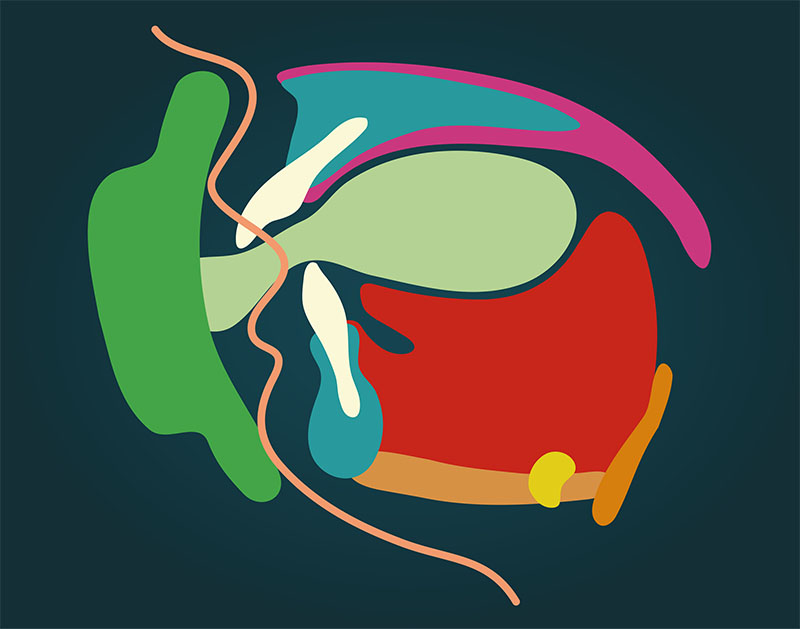
The tongue is freely movable.
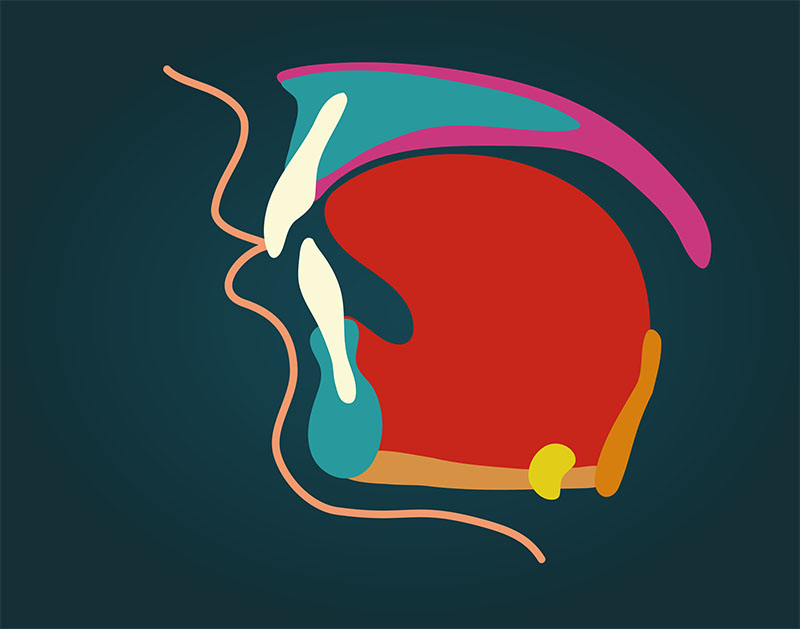
The schematic picture shows how the dummy blocks the tongue in its free movement and negatively influences the position of the teeth.
What now? Functional mechanisms whose usual process is disturbed are replaced by compensatory services. Native abilities are replaced by new ones that are adapted to the changed situation. The tongue, blocked by a soother, has to adjust a new pattern of movement in order to make its contribution to the indispensable success of swallowing via detours. It manages this deviation from its original programme without any problems and the short-term compensation is a fantastic help to maintain what is necessary but under false influences.
It is different, however, when such detours are taken again and again for a long time. This brings a completely new effect into play: our brain unlearns the original right and learns the wrong with the “diversions”, which leads to very far-reaching influences on other functional systems. With the learning processes, not only do the tongue movements and the swallowing mechanisms associated with them change, but a large number of complex, interactive functional patterns also arrange themselves into this process. The original correct pattern, but changed by “soother influence”, rearranges complex systemic functional systems.
Everyone can imagine that this is not without consequences. In addition to the well-known and already sufficiently bad consequences such as crooked teeth, altered palate shapes, mouth breathing, there are many symptoms. They do not only affect the little “pacifier children”, but can affect people at any time of their lives. A particular problem is that the connection to the original, early causative factors is rarely recognised. The serious symptoms present themselves at some point, repeat and intensify and are usually treated unsuccessfully, ignoring the causes.
On the way to mouth breathing
With correct basic tension of the inner and outer tongue muscles, as well as the chewing muscles, the mouth is closed. Vital breathing takes place through the nose and not through the mouth. If dummies are used over a longer period of time, complex functional patterns change. Muscle tensions have changed so that mouth opening predominates instead of mouth closing.

Breathing adapts to the open mouth: People breathe through the mouth instead of through the nose. As a result, numerous health problems arise: The child very often has childhood diseases: General infections, middle ear infections. The palate forms narrowly and the teeth are already crooked in the first set of teeth. The apparent comfort that this does not matter in the first set is a chimera.
After the loss of the milk teeth, the permanent teeth also grow in the direction already indicated by the first teeth. Now at the latest, the orthodontist has to get involved. In fact, he can straighten the teeth somewhat through many years of treatment with braces, clasps or splints. It looks better than before, even if biting down doesn’t work quite right. Everyone involved is happy that the torture is finally over. But how long does the joy last? It’s not exactly rare for some teeth to inexorably change direction again after just a few months.
The orthodontist had set up the teeth more beautifully, but had not considered the causes that were responsible for the crooked growth. They developed yet in early childhood. They are still there, with and without crooked teeth, but – well, let’s forget about them and focus on the symptoms! What seems unbelievable at first becomes a bitter reality. The teeth are crooked for the second time despite orthodontics. The orthodontist advises a new start of treatment, recently even a costly operation of the jaws. Oh God!
Minute-long applications of dummies will not play a big role, nevertheless it is better to do without these “soothing crutches” altogether. Frequent and prolonged use always has negative consequences. This is also the case when daring practitioners use dummies in therapy. Children are encouraged to “suckle attacks”, even if they are already four years old and older. There is also the danger that they will walk around or sleep with a pacifier in their mouth again. Sometimes even teenagers and adults are still prone to such habits, which they use every day. Big disaster!
When it comes to temporomandibular joint problems, headaches, neck pain, metabolic disorders, migraines and much more, few adults can imagine a connection to early childhood habits. In fact, however, complex functional patterns and reflex mechanisms have been altered with long-term effects and remain the cause of very different health problems throughout life. We know from neuroscience that incorrect patterns, regardless of their complexity, can only be changed from incorrect to correct through learning or the development of new neuronal patterns.
If you are affected by such complaints, you should definitely do something about it. With only a little effort, you can get active yourself and resolve your health problems through FaceFormer Training Therapy and achieve lasting stability. The lasting success shows that it is worth the effort!
The baby cries and often, a pacifier is used to calm it down. However, many parents are not even aware of the damage they are doing to their child. This damage often persists into old age and the connection between these problems is often not even recognised.
You can purchase your FaceFormer online in the Dr. Berndsen Shop, from our sales partners or from numerous doctors and therapists or locally in your pharmacy.
Ask for the central pharmaceutical number PZN 18092273 (FaceFormer ONE blue).
Further product variants and useful accessories are available.
Saving tip especially for doctors and therapists: 20%++ discount on orders of 5 FaceFormers or more!
The effective solution for snoring, sleep apnea, CMD, jaw problems and many other indications. Simple, causal, effective.
Wasserstr.25
59423 Unna
Germany
+49 (0) 23 03-89 99 1
+49 (0) 23 03 – 89 88 6
Mo. to Fr. from 8:00 to 16:00
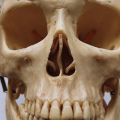
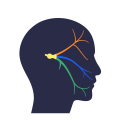 Pain in the face – trigeminal neuralgia
Pain in the face – trigeminal neuralgiaThis site uses cookies. By continuing to browse the site, you are agreeing to our use of cookies.
OK, agree with allAgree to essentialsShow settingsThe satisfaction of visitors to our website is important to us. In order to better address you, we use cookies. Thereby we achieve that the website works technically reliable and secure.
You can change or revoke your consent at any time.
In the privacy policy you can learn more about cookies and privacy setting.
View privacy policy
Essential cookies enable basic functionality and are necessary for the proper functioning of the website.
This data may be linked to user information of users logged in on youtube.com and google.com.
YouTube video embedding
Used to unlock YouTube content.
Google Analytics
Cookie from Google for website analytics.
Generates statistical data about how the visitor uses the website
